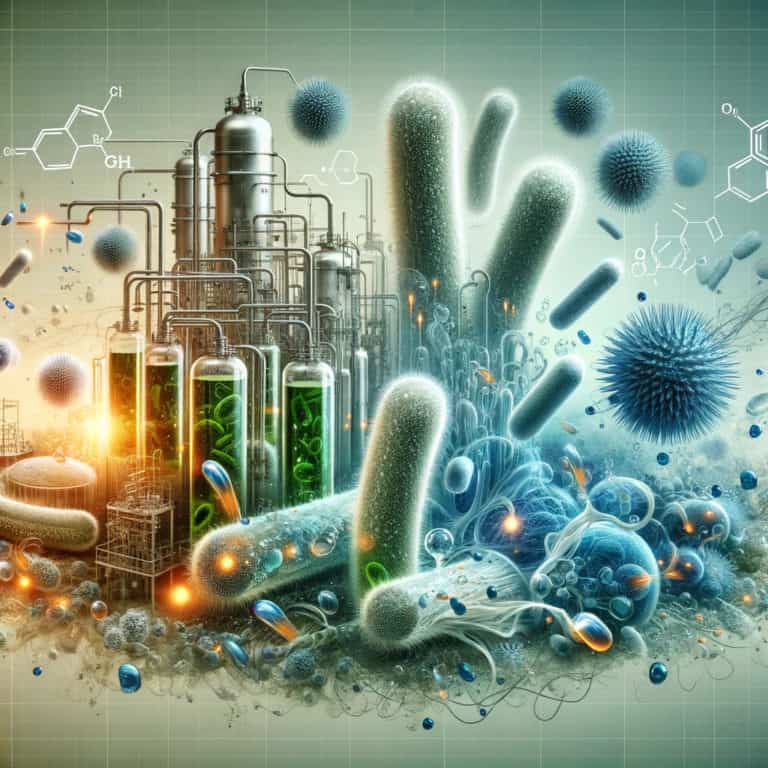Advancements and Challenges in Modern Drug Delivery Systems
Modern drug delivery methods are investigated in this paper together with current developments in vehicle technology and the continuous difficulties with biocompatibility, stability, and regulatory approval procedures.

Introduction to Drug Delivery Systems
For the aimed and efficient delivery of medications to particular tissues, organs, cells, or subcellular structures, drug delivery systems are crucial in medicine (Li et al., 2019). From traditional ways to more complex techniques like targeted medication delivery, which seeks to minimize side effects by delivering pharmaceuticals especially to the desired site of action, these systems have evolved (Bae & Park, 2011). Overcoming obstacles and improving the effective distribution of medications to their target places depends on the advancement of innovative technology (Patra et al., 2018).
A major development in drug delivery are controlled-release delivery systems, which provide a better degree of control over variables such dosage, frequency, and infusion rates thereby enhancing the efficacy of drug delivery (Vargason et al., 2021). By means of peptide-drug conjugates and liposomes, nano-based drug delivery systems help to assemble nanoscale particles that can either passively or actively transport drugs to target organs, so improving the drug efficacy and lowering side effects (Zhu et al., 2021; Akbarzadeh et al., 2013; Wang et al., 2017).
Particularly in cancer treatment, targeted drug delivery systems are meant to deliver medications especially to tumor locations with low side effects connected with free pharmaceuticals, so increasing the treatment outcomes (Kwon et al., 2012; Cukierman & Khan, 2010). These systems seek to increase drug distribution at the target site while reducing drug release to non-target sites, hence improving drug bioavailability and efficacy (Piri et al., 2022; Prabahar et al., 2021).
Extracellular vesicles, magnetosomes, niosomes, and mucoadhesive microspheres are the main targets of recent developments in drug delivery systems aimed at enhancing targeted drug delivery to particular cells and tissues (Lara et al., 2020; Ray et al., 2018; Raj et al., 2021). These novel methods maximize the special qualities of these carriers to improve drug absorption, accumulation, and therapeutic effects in the target sites.
By increasing therapeutic efficacy, lowering side effects, and so improving patient outcomes, the development of drug delivery systems from traditional techniques to focused approaches has transformed medicine. Researchers keep improving the accuracy and efficiency of medication distribution systems for many therapeutic uses by using cutting-edge carriers and advanced technologies.
Types of Drug Delivery Vehicles
Improving the accuracy and efficiency of drug delivery systems depends on the vehicles used for administration of drugs. Because of their different chemical characteristics and modes of action, liposomes, nanoparticles, and polymer-based systems are somewhat common forms of drug delivery vehicles.
Providing a flexible medication delivery system, liposomes— lipid-based vesicles—can encapsulate both hydrophilic and hydrophobic medicines Naseri et al. (2015). With their bilayer structure, which lets them carry medications inside their core or bilayers, these lipid nanoparticles preserve the drug and help it go to its target areas (Liu et al., 2014.). Effective carriers of drug delivery, liposomes can be surface-modified to improve targeting and release characteristics (Bhatt, 2023).
With diameters ranging from 1 to 1000 nanometers, solid particles known as nanoparticles offer a high surface area-to—-ratio for medication loading and delivery (Choice et al., 2008). Their engineering from different materials—polymers, metals, or silica allows customized medication release profiles and improved drug stability (Watermann & Brieger, 2017). By passive accumulation in target cells or tissues, nanoparticles enhance medication bioavailability and therapeutic results (Choose et al., 2008).
Because of their customizable characteristics and biocompatibility (Vallorz et al., 2022), polymer-based systems—including polymeric nanoparticles—offer a flexible platform for drug administration. Designed to target particular tissues or cells, improve medication stability, and regulate drug release kinetics, these systems can be made to By encapsulating a broad spectrum of medications and delivering them in a sustained manner, polymeric nanoparticles can improve treatment efficacy and lower side effects (Vallorz et al., 2022).
Diversity in drug delivery vehicles with distinct chemical characteristics and modes of action are liposomes, nanoparticles, and polymer-based systems. They are absolutely essential for optimizing targeted drug delivery, raising therapeutic results, and reducing adverse effects in many different disease therapies.
Advances and Challenges
With their creative ideas to improve treatment efficacy and patient outcomes, recent developments in drug delivery technology have profoundly affected the discipline of medicine. Since its first in 1965, liposomal formulations have seen significant technical development and offer a flexible basis for drug delivery. Bulbake and associates, 2017. Evolution of non-invasive delivery technologies has resulted in improved knowledge of drug kinetics and overcomes of biological obstacles to systemic drug access (Vargason et al., 2020). With developments in pharmaceutical, material, and biological sciences supporting better drug delivery, drug delivery systems research has made great strides (Li et al., 2019).
Offering new commercial opportunities for pharmaceutical businesses, insoluble drug delivery techniques have rejuvenated poorly soluble medicines (Kalepu & Nekkanti, 2015). Direct monitoring of small molecules in ambulatory animals made possible by real-time measuring technologies supports feedback-regulated dosage for individualized drug administration (Arroyo‐Currás et al., 2017). Micro and nanoscale technologies have advanced oral drug delivery systems, therefore offering exact and efficient drug administration techniques (Ahadian et al., 2020).
FDA-approved pharmaceutical products—classified into several quadrants depending on their features—have also been driving developments in drug delivery methods (Zhong et al., 2018). Over the years, controlled drug delivery systems have developed with new technology and approaches to improve drug release patterns and efficacy (Park, 2014). Using different compounds and nanoparticles for targeted medication administration, mitochondria-targeted drug delivery techniques have recently advanced (Bottani, 2023).
Drug distribution still presents difficulties with regard to biocompatibility, stability, and regulatory barriers. To solve solubility and bioavailability challenges, researchers have concentrated on enhancing the stability and regulatory aspects of lipid-based vesicular systems (BOGGULA et al., 2022). As possible vesicular drug delivery systems, niosomes have promise but need more study to maximize their stability and regulatory compliance (Kumavat et al., 2021). The creation of sophisticated medication delivery systems confronts obstacles related to commercial availability, which calls for attempts to overcome these difficulties for general use (Boudovitch, 2023).
Finally, by providing exact and focused delivery systems, recent developments in drug delivery technology have transformed medication administration. Although these developments have significant potential to enhance patient care, successful implementation of these technologies into clinical practice depends on overcoming issues with biocompatibility, stability, and regulatory criteria even if their improvement of patient care is highly desired.
References
Akbarzadeh, A., Rezaei-Sadabady, R., Davaran, S., Joo, S., Zarghami, N., Hanifehpour, Y., … & Nejati-Koshki, K. (2013). Liposome: classification, preparation, and applications. Nanoscale Research Letters, 8(1). https://doi.org/10.1186/1556-276x-8-102
Bae, Y. and Park, K. (2011). Targeted drug delivery to tumors: myths, reality and possibility. Journal of Controlled Release, 153(3), 198-205. https://doi.org/10.1016/j.jconrel.2011.06.001
Cukierman, E. and Khan, D. (2010). The benefits and challenges associated with the use of drug delivery systems in cancer therapy. Biochemical Pharmacology, 80(5), 762-770. https://doi.org/10.1016/j.bcp.2010.04.020
Kwon, I., Han, B., & Park, K. (2012). Analysis on the current status of targeted drug delivery to tumors. Journal of Controlled Release, 164(2), 108-114. https://doi.org/10.1016/j.jconrel.2012.07.010
Lara, P., Chan, A., Cruz, L., Quest, A., & Kogan, M. (2020). Exploiting the natural properties of extracellular vesicles in targeted delivery towards specific cells and tissues. Pharmaceutics, 12(11), 1022. https://doi.org/10.3390/pharmaceutics12111022
Li, C., Wang, J., Wang, Y., Gao, H., Wei, G., Huang, Y., … & Jin, Y. (2019). Recent progress in drug delivery. Acta Pharmaceutica Sinica B, 9(6), 1145-1162. https://doi.org/10.1016/j.apsb.2019.08.003
Patra, J., Das, G., Fraceto, L., Campos, E., Rodriguez-Torres, M., Acosta-Torres, L., … & Shin, H. (2018). Nano based drug delivery systems: recent developments and future prospects. Journal of Nanobiotechnology, 16(1). https://doi.org/10.1186/s12951-018-0392-8
Prabahar, K., Alanazi, Z., & Qushawy, M. (2021). Targeted drug delivery system: advantages, carriers and strategies. Indian Journal of Pharmaceutical Education and Research, 55(2), 346-353. https://doi.org/10.5530/ijper.55.2.72
Puri, R., Arora, V., Kabra, A., Dureja, H., & Hamaal, S. (2022). Magnetosomes: a tool for targeted drug delivery in the management of cancer. Journal of Nanomaterials, 2022, 1-12. https://doi.org/10.1155/2022/6414585
Raj, H., Sharma, A., Sharma, S., Verma, K., & Chaudhary, A. (2021). Mucoadhesive microspheres: a targeted drug delivery system. Journal of Drug Delivery and Therapeutics, 11(2-S), 150-155. https://doi.org/10.22270/jddt.v11i2-s.4791
Ray, S., Bano, N., Shukla, T., Upmanyu, N., Pandey, S., & Parkhe, G. (2018). Noisomes: as novel vesicular drug delivery system. Journal of Drug Delivery and Therapeutics, 8(6), 335-341. https://doi.org/10.22270/jddt.v8i6.2029
Vargason, A., Anselmo, A., & Mitragotri, S. (2021). The evolution of commercial drug delivery technologies. Nature Biomedical Engineering, 5(9), 951-967. https://doi.org/10.1038/s41551-021-00698-w
Wang, Y., Cheetham, A., Angacian, G., Su, H., Xie, L., & Cui, H. (2017). Peptide–drug conjugates as effective prodrug strategies for targeted delivery. Advanced Drug Delivery Reviews, 110-111, 112-126. https://doi.org/10.1016/j.addr.2016.06.015
Zhu, Y., Tang, K., & Lv, J. (2021). Peptide–drug conjugate-based novel molecular drug delivery system in cancer. Trends in Pharmacological Sciences, 42(10), 857-869. https://doi.org/10.1016/j.tips.2021.07.001
Bhatt, P. (2023). Plasma modification techniques for natural polymer-based drug delivery systems. Pharmaceutics, 15(8), 2066. https://doi.org/10.3390/pharmaceutics15082066
Cho, K., Wang, X., Nie, S., Chen, Z., & Shin, D. (2008). Therapeutic nanoparticles for drug delivery in cancer. Clinical Cancer Research, 14(5), 1310-1316. https://doi.org/10.1158/1078-0432.ccr-07-1441
Liu, C., Chiu, H., Wu, W., Sahoo, S., & Hsu, C. (2014). Novel lutein loaded lipid nanoparticles on porcine corneal distribution. Journal of Ophthalmology, 2014, 1-11. https://doi.org/10.1155/2014/304694
Naseri, N., Valizadeh, H., & Zakeri–Milani, P. (2015). Solid lipid nanoparticles and nanostructured lipid carriers: structure, preparation and application. Advanced Pharmaceutical Bulletin, 5(3), 305-313. https://doi.org/10.15171/apb.2015.043
Vallorz, E., Encinas-Basurto, D., Schnellmann, R., & Mansour, H. (2022). Design, development, physicochemical characterization, and in vitro drug release of formoterol pegylated plga polymeric nanoparticles. Pharmaceutics, 14(3), 638. https://doi.org/10.3390/pharmaceutics14030638
Watermann, A. and Brieger, J. (2017). Mesoporous silica nanoparticles as drug delivery vehicles in cancer. Nanomaterials, 7(7), 189. https://doi.org/10.3390/nano7070189
Ahadian, S., Finbloom, J., Mofidfar, M., Di̇ltemi̇z, S., Nasrollahi, F., Davoodi, E., … & Khademhosseini, A. (2020). Micro and nanoscale technologies in oral drug delivery. Advanced Drug Delivery Reviews, 157, 37-62. https://doi.org/10.1016/j.addr.2020.07.012
Arroyo‐Currás, N., Somerson, J., Vieira, P., Ploense, K., & Kippin, T. (2017). Real-time measurement of small molecules directly in awake, ambulatory animals. Proceedings of the National Academy of Sciences, 114(4), 645-650. https://doi.org/10.1073/pnas.1613458114
BOGGULA, N., BAKSHI, V., & PEDDAPALLI, H. (2022). An overview of lipid based vesicular systems: stability and regulatory considerations. GSC Biological and Pharmaceutical Sciences, 21(3), 053-061. https://doi.org/10.30574/gscbps.2022.21.3.0458
Bottani, E. (2023). Advances in mitochondria-targeted drug delivery. Pharmaceutics, 15(8), 2089. https://doi.org/10.3390/pharmaceutics15082089
Boudovitch, D. (2023). Review of commercially available nano-drugs and nano-delivery systems: challenges and perspectives.. https://doi.org/10.20944/preprints202312.1480.v1
Bulbake, U., Doppalapudi, S., Kommineni, N., & Khan, W. (2017). Liposomal formulations in clinical use: an updated review. Pharmaceutics, 9(2), 12. https://doi.org/10.3390/pharmaceutics9020012
Kalepu, S. and Nekkanti, V. (2015). Insoluble drug delivery strategies: review of recent advances and business prospects. Acta Pharmaceutica Sinica B, 5(5), 442-453. https://doi.org/10.1016/j.apsb.2015.07.003
Kumavat, S., Sharma, P., Koka, S., Sharma, R., Gupta, A., & Darwhekar, G. (2021). A review on niosomes: potential vesicular drug delivery system. Journal of Drug Delivery and Therapeutics, 11(5), 208-212. https://doi.org/10.22270/jddt.v11i5.5046
Li, C., Wang, J., Wang, Y., Gao, H., Wei, G., Huang, Y., … & Jin, Y. (2019). Recent progress in drug delivery. Acta Pharmaceutica Sinica B, 9(6), 1145-1162. https://doi.org/10.1016/j.apsb.2019.08.003
Park, K. (2014). Controlled drug delivery systems: past forward and future back. Journal of Controlled Release, 190, 3-8. https://doi.org/10.1016/j.jconrel.2014.03.054
Vargason, A., Anselmo, A., & Mitragotri, S. (2021). The evolution of commercial drug delivery technologies. Nature Biomedical Engineering, 5(9), 951-967. https://doi.org/10.1038/s41551-021-00698-w
Zhong, H., Chan, G., Y, H., Hao, H., & Ouyang, D. (2018). A comprehensive map of fda-approved pharmaceutical products. Pharmaceutics, 10(4), 263. https://doi.org/10.3390/pharmaceutics10040263



